On Monday afternoon, September 29th, WASART received a call for assistance to help retrieve a large-breed dog named Rosie on the Pacific Crest Trail (PCT) in the Goat Rocks Wilderness. Rosie’s owner had been injured while hiking and airlifted out, but Rosie could not be transported by helicopter*. She was secured at the site, and the flight crew provided us with her coordinates. Rosie was 7.5 miles from the trailhead, down a steep rock field, and a technical rescue was required.
The same afternoon of the call, our team (Team 1) deployed and staged near the trailhead, spending the night there for an early morning start.
At first light, Team 1 headed up the trail carrying rescue essentials: pet first aid supplies, ropes, and rigging gear.
Additional members—many driving 3-5 hours from the Seattle area— would be arriving in the early morning hours to join them as a Team 2, who would be assisting the operation. Team 2 would be following with the rescue litter and wheel in case Rosie needed to be carried out.
One important factor for this rescue is the setting. This stretch of the PCT is especially challenging with loose scree, unstable rock, snowfields, and weather that can shift quickly. At this time of year, that also includes a snow field. When Team 1 reached the snowfield, the map showed the trail running beneath the ice. The slick surface made it unsafe to cross. They cautiously picked their way through a field of obstacles, testing each step for stability.
The trail led to a ridge line, with scree slopes stretching in every direction. Strong winds and sharp wind chill made conditions even more difficult. Based on the coordinates from the helicopter team, Team 1 knew Rosie was nearby. Scanning the rocks, they spotted her owner’s backpack—but not Rosie herself, whose coloring blended seamlessly with the terrain.
Two members of Team 1 traversed toward the backpack. The narrow, unstable trail—only 6–12 inches wide on a steep 30–55 degree slope—required the traversers to lean into the hillside and move cautiously to avoid sliding.
Halfway down, they spotted Rosie about 150 feet below the trail, sitting on a sleeping bag, exactly where the coordinates indicated. The two team members switchbacked down the slope and cut across to her. When they were within 30 feet, Rosie let out a low growl. The rescuers paused to give Rosie time to adjust to their presence before approaching. Rosie’s leash was tangled in several rocks and she looked bright and alert. She was not wearing a muzzle*. Once released, she hesitated but with steady encouragement, stood and allowed the two to guide her back uphill.
Once back at the ridge line where the ground was much more stable and safe, they gave Rosie treats and water, earning her trust and appreciation. They headed back, taking a different route back across the snowfield, descending to a sandy beach-like area near the snowmelt where they took a break to offer Rosie a chance to drink before climbing back to the trail.
Now heading back down, Team 1 reunited with Team 2, who had been ferrying the rescue litter and additional gear up the trail. Much to our relief, Rosie made the entire hike out on her own. Back at the vehicles, the team placed Rosie in the rescue truck where she fell fast asleep for the drive down the forest road. After a demanding 12 hours and 15 rugged miles Rosie and her owner were overjoyed to be reunited at the Packwood Fire Department.
The team wrapped up, debriefed, and we made our way home–tired, yet grateful to be a part of Rosie’s rescue story. Bringing Rosie safely back from the backcountry and reuniting her with her person is exactly why we do this work.
(*) We are aware of controversy surrounding Rosie’s situation. Every rescue is an anomaly. Every rescue is complicated by details that are invisible to non-participants who aren’t on site. One detail we find in common is that every team we have met and worked with have been professional and worked as hard as they could to make sure the rescue was as complete as possible. Washington state search and rescue personnel are volunteers who make the best decisions they can with what they have available to them. Sometimes there are no good choices, just less bad ones. In this instance, the helicopter crew could not take Rosie, but made sure a team was sent who could, as soon as they could. They provide us with very accurate coordinates to allow us to find Rosie. Rosie was not muzzled at our time of contact with her. As you read this story, please keep in mind the people reading the comments are often rescuers, including WASART volunteers. We all do our best. If you appreciate what we do, please help us celebrate a successful rescue and the hard work of people who take risks and time out of their lives to help others, animals and humans. Thank you all for your support.
WASART is an all-volunteer nonprofit organization. There is never a charge for our rescues. To learn more about us or to make a donation, please visit www.wasart.org.

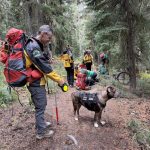
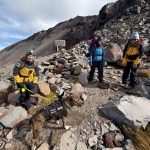
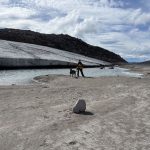
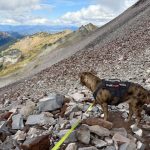
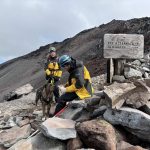
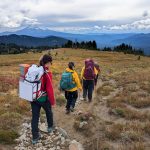
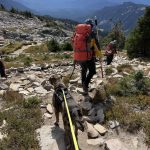
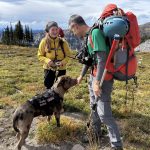
 Donny, Trapped on a Ledge
Donny, Trapped on a Ledge